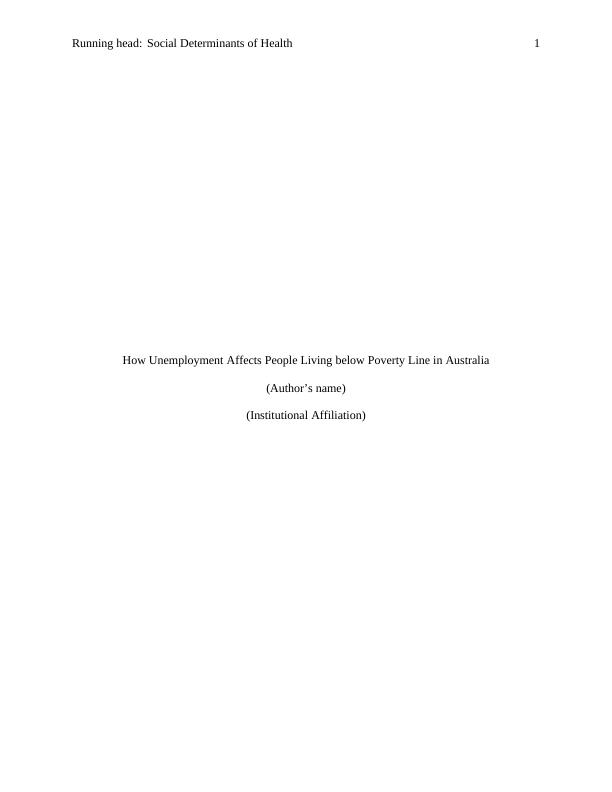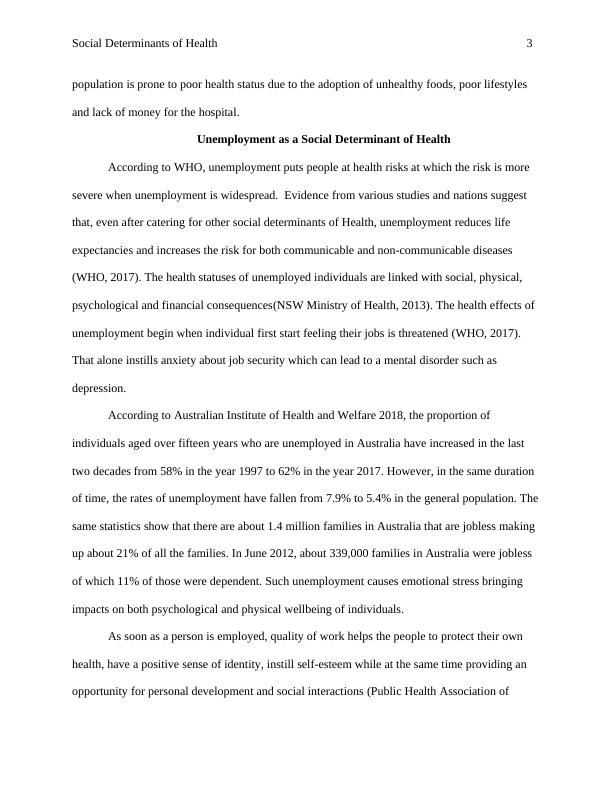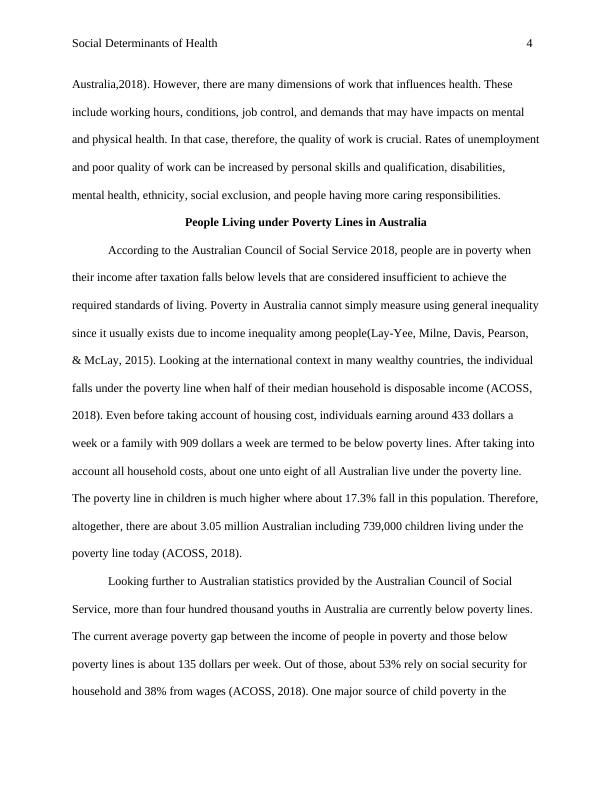How Unemployment Affects People Living below Poverty Line in Australia
14 Pages4109 Words28 Views
Added on 2023-03-17
About This Document
This article examines the impact of unemployment on individuals living below the poverty line in Australia. It explores the social determinants of health and the challenges faced by this population. The article discusses the effects of unemployment on mental health, health literacy, child development, health-seeking behaviors, and housing. It also suggests ways to address these negative impacts.
How Unemployment Affects People Living below Poverty Line in Australia
Added on 2023-03-17
ShareRelated Documents
End of preview
Want to access all the pages? Upload your documents or become a member.
Social Determinant of Health: Housing and Its Impact on Low-Income Families in the US
|14
|4137
|246
Australian Institute of Health and Welfare
|9
|2711
|28
Social Determinants of Health Assignment pdf
|16
|4019
|20
Indigenous Australians: Social Determinants of Health, Vulnerability, Capacity to Cope, Health Outcomes, Inequalities and Inequities
|2
|723
|181
Indigenous Australians: Health Inequalities and Social Determinants of Health
|2
|714
|308
Risk of Disease among Indigenous of Remote Areas Australia Report 2022
|13
|3660
|21




